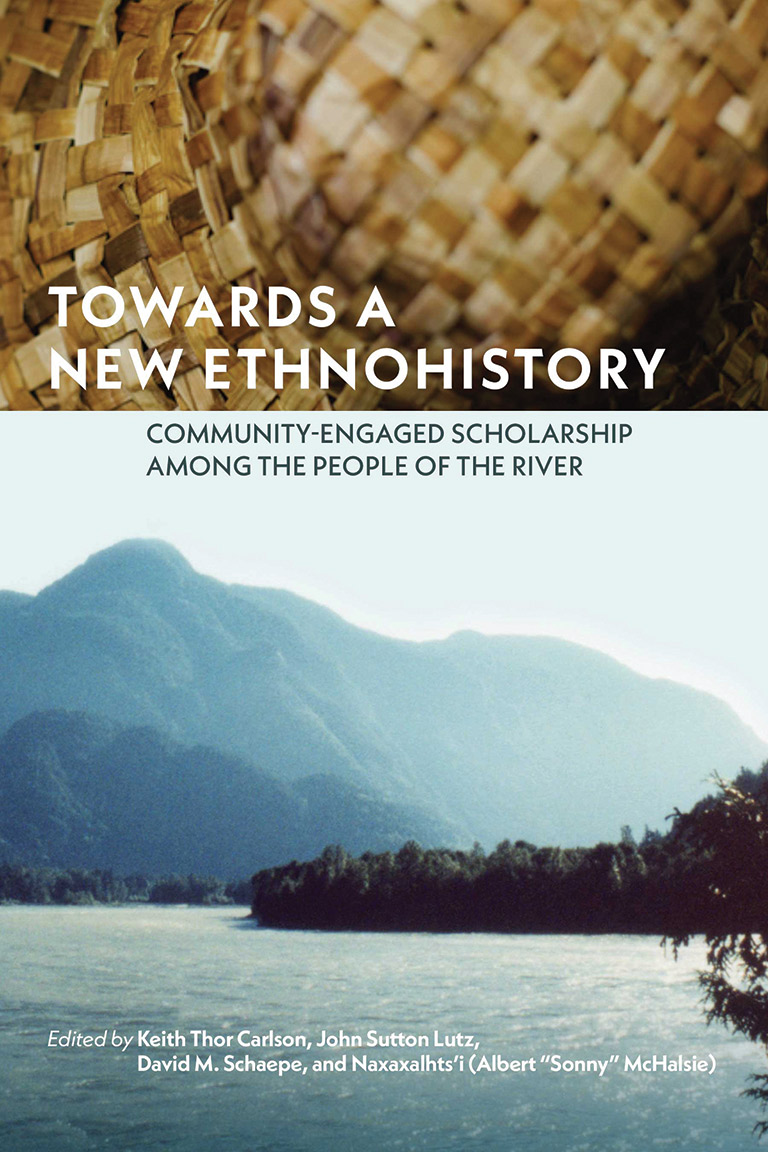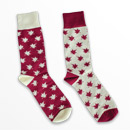Towards a New Ethnohistory

Towards a New Ethnohistory: Community-Engaged Scholarship Among the People of the River
edited by Keith Thor Carlson, John Sutton Lutz, David M. Schaepe, and Naxaxalhts’i (Albert “Sonny” McHalsie)
University of Manitoba Press, 303 pages, $27.95
A double review with
An Ethnohistorian in Rupert’s Land: Unfinished Conversations
by Jennifer S. H. Brown
AU Press, 368 pages, $44.95
In this era of reconciliation, ethnohistory has emerged as a fertile field of exploration for scholars, as these two books demonstrate. Anthropologist Jennifer S.H. Brown’s collection of essays mines her four decades of research into the fur trade and its impact on the Cree and Ojibwe people of Rupert’s Land. The editors of Towards a New Ethnohistory draw from twenty years of research by young scholars working with the Stó:lō Nation in British Columbia. Both are weighty academic tomes that interested scholars and patient general readers will find rewarding.
Brown admits that the term “ethnohistory” is somewhat nebulous. A dictionary will describe it as combining history and anthropology, particularly when studying Indigenous or non-Western people. Brown elaborates, saying ethnohistorians are “making connections among different fields, assembling a varied toolkit to approach texts and other sources of information, Indigenous and non- Indigenous, critically and from different angles.”
Brown taught history at the University of Winnipeg from 1983 to 2011. From there, she only had to walk a few blocks to pore over the holdings of the Hudson’s Bay Company Archives, and she made frequent trips to northern Manitoba to visit Ojibwe and Cree communities.
The eighteen essays Brown selected include talks and articles from various points in her career. In one article she examines how the Cree and the Europeans differed in the way they named geographical features. For instance, what we now know as Hudson Bay was called Winni-pek, “the sea of dirty (salty) water,” by the Lowland Cree or Omushkego. European explorers tended to name landmarks after themselves, their hometowns, or their royal sponsors, whereas Cree names were usually descriptive. For instance, while Thomas James gave the name Cape Henrietta Maria, after King Charles I’s queen, to the entrance to James Bay, Brown writes that the Omushkego called it “Ki-ni-ki-mooshwaaw, meaning ‘barren or treeless headland,’ a visual image … that surely would not have delighted the queen.”
Another essay, engagingly titled “The Blind Men and the Elephant,” points out that whoever approaches the fur trade (and other aspects of) history forms views that depend on their preconceptions and on whatever part they’ve touched first. “Indeed, some, having discovered the tusk or the trunk, will continue to maintain that the fur trade was epitomized by hardnosed, aggressive capitalists piercing the flank of Canada’s north…. Others, touching the velvet ears or the soft undersides, will keep to a gentler view of the fur trade as a setting for communication, intercultural partnerships, and new social or even tender ties.”
Brown was among those who touched the soft undersides. She describes herself and her fellow scholar Sylvia Van Kirk as “the Bobbsey Twins of fur trade social history.” In their time, both were pioneers in researching the role of the Indigenous women who became “country wives” of European fur traders and were frequently abandoned when their men returned to Europe. Many Canadians living today are descended from these fur trade relationships.
As Brown notes, the narrow and lonely historical trails she and Van Kirk followed “are now broad and well-trodden by scholars of many backgrounds who are shedding light on subjects and areas scarcely thought of in the 1970s.” Those scholars include the contributors to Towards a New Ethnohistory. As researchers with the University of Victoria’s Stó:lō Ethnohistory Field School, which was established in 1998, they are part of a new generation that is sensitive to the protocols and philosophical outlooks of the Indigenous communities they are studying. They call it “decolonized ethnohistory.”
In his prologue to the book, Naxaxalhts’i (Albert “Sonny” McHalsie) notes that the scholars have done more than simply record the history of Stó:lō people living along British Columbia’s Fraser River: “They have helped to find answers to historical questions that are priorities for Stó:lō people and families.” He observes that the researchers are building long-term relationships with the communities they study. This was not the case in the past, when students and professors would show up for a summer of fieldwork and then disappear. “I remember elders telling me how much they resented the researchers who came to interview them and then were never heard from again,” writes Naxaxalhts’i.
The topics in the essays cover Stó:lō legends, stories, kinship, memory, and ancestral naming, along with studies of fishing sites along the Fraser River, the culture of boxing among young men, their pride in working as loggers, and how the Stó:lō care for their dead. One chapter describes a successful attempt to revive one of the Stó:lō languages. Launched in 1971, the Skulkayn Heritage Project involved conducting interviews with the last of the elders to be fluent in Halq’eméylem and recording their traditional stories. This resulted in a revival of the language and a dictionary that is now available as a smart phone app. “The project affirmed the Stó:lō way of life as a living culture,” writes Ella Bedard.
These scholars demonstrate how to work with local people in a respectful way that furthers the communities’ own interests, part of what they have termed “the New Ethnohistory.” As Adam Goudry writes in the epilogue, “researchers who avoid community participation are more likely to be challenged in intellectual spaces, to face cutting criticism at conferences or public talks, and to be critiqued in hushed tones by scholars.” The New Ethnohistory is here to stay.
We hope you’ll help us continue to share fascinating stories about Canada’s past by making a donation to Canada’s History Society today.
We highlight our nation’s diverse past by telling stories that illuminate the people, places, and events that unite us as Canadians, and by making those stories accessible to everyone through our free online content.
We are a registered charity that depends on contributions from readers like you to share inspiring and informative stories with students and citizens of all ages — award-winning stories written by Canada’s top historians, authors, journalists, and history enthusiasts.
Any amount helps, or better yet, start a monthly donation today. Your support makes all the difference. Thank you!
Themes associated with this article
Advertisement
You might also like...

Our online store carries a variety of popular gifts for the history lover or Canadiana enthusiast in your life, including silk ties, dress socks, warm mitts and more!









